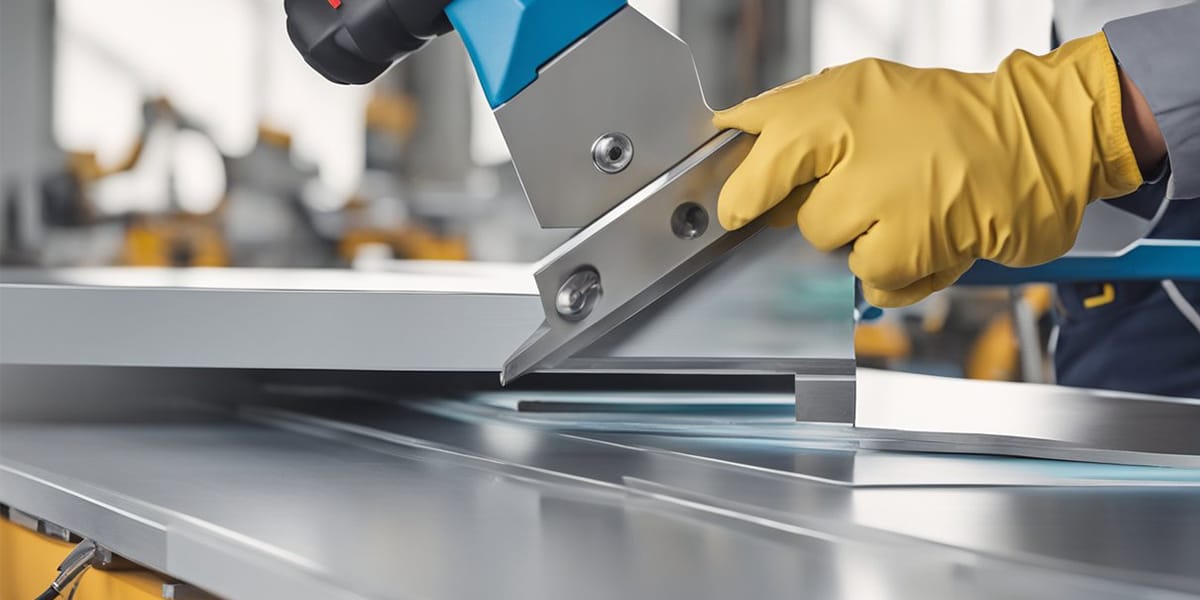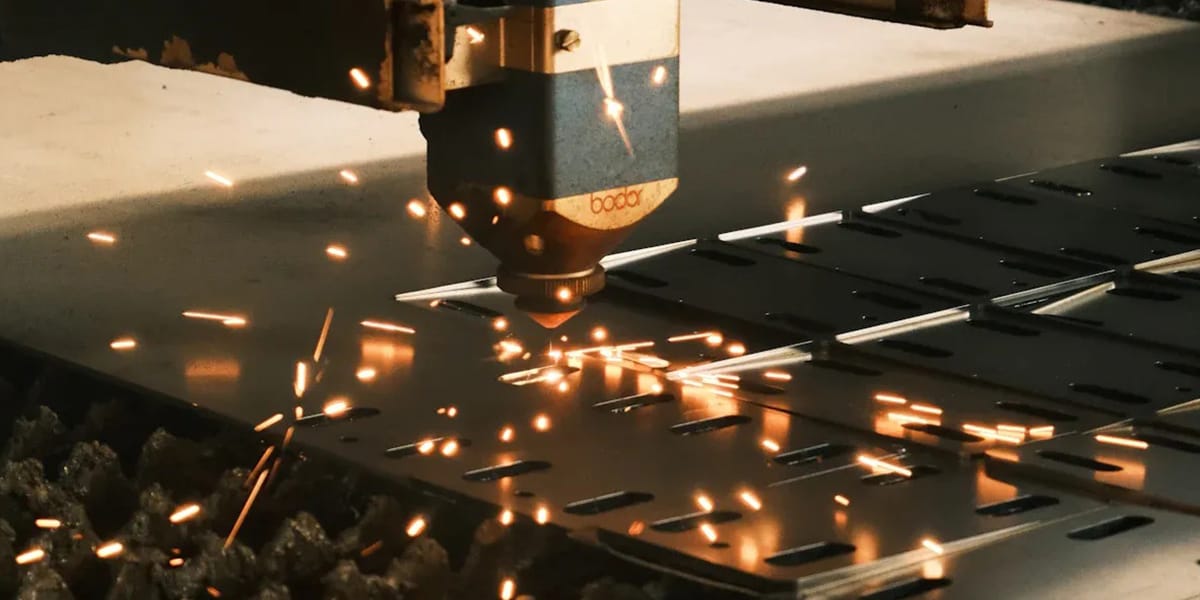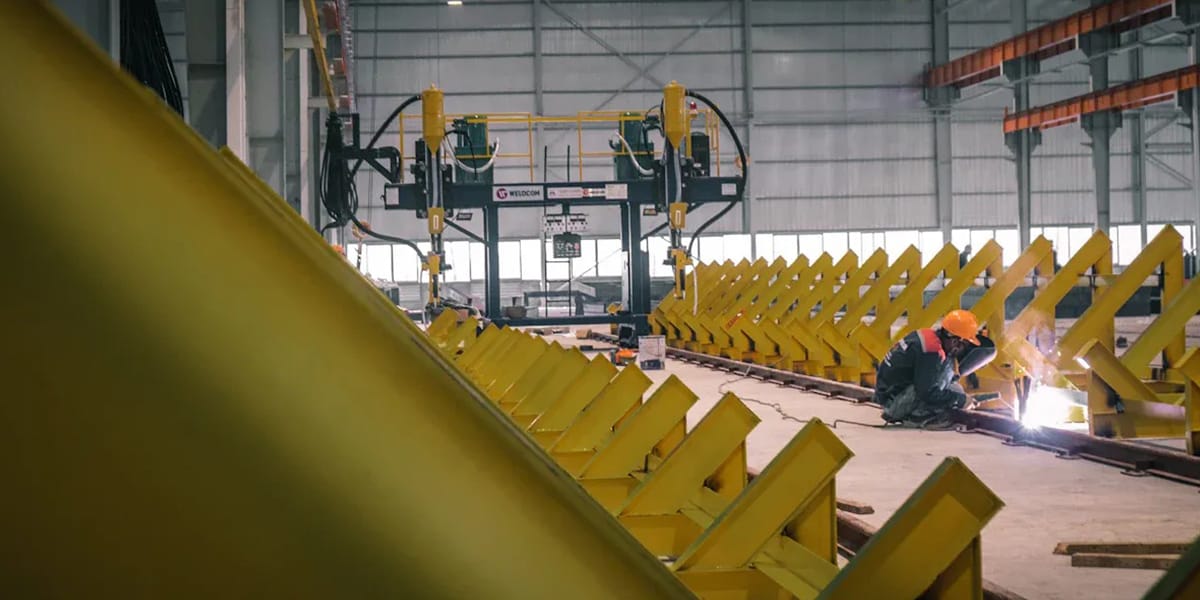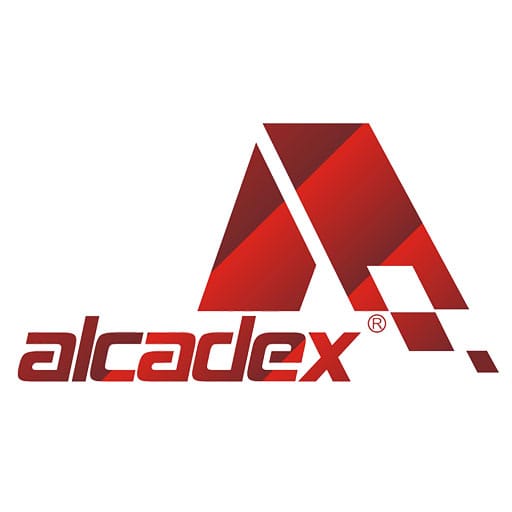
02 Aug Step-by-Step Guide to ACM Metal Panel Cutting and Bending
Table of Contents
You can cut and bend an ACM Metal Panel with the right approach. These panels respond well to careful handling and proper tools. Always use equipment made for metalwork to get clean edges and safe results. Safety matters most. Wear gloves, goggles, and a dust mask every time you work with these panels. When you follow best practices, you protect yourself and create quality work.
Key Takeaways
Always wear safety gear like gloves, goggles, and masks. This keeps you safe when cutting and bending ACM Metal Panels.
Work in a clean and bright place. Keep your tools neat to help you cut right and not make mistakes.
Use sharp blades with carbide tips and the correct tools. This helps you get smooth edges and stops the panels from getting hurt.
Make a V-groove on the back of the panel before you bend it. This stops cracks and helps you bend the panel into the right shape.
Check and clean the panel edges after you cut them. This makes the panel look nice and keeps out water and damage.
ACM Metal Panel Basics
What Is ACM?
You might ask how an ACM Metal Panel is different from other materials. ACM means Aluminum Composite Material. This panel has two thin sheets of aluminum alloy on the outside. These sheets are stuck to a core made from safe, light polyethylene or a fire-safe mineral. Makers often put a protective film and special coatings, like fluorocarbon resin, on the front. These coatings help the panel fight off bad weather and rust. Some panels even have wood grain looks or nano coatings for more water safety and strength.
This layered setup makes the panel light but strong. The sandwich design mixes the good parts of metal and plastic. You get a panel that is easy to move, does not break easily, and can handle tough weather. ACM Metal Panel comes in lots of colors and finishes. This makes it a favorite for both inside and outside projects.
Why Structure Matters
The way an ACM Metal Panel is built is important for cutting and bending. The two aluminum layers make the panel hard and strong. The core keeps it light and lets it bend. This mix lets you cut, shape, and bend the panel with simple tools. You can use woodworking tools or special machines like CNC routers and press brakes. The panel stays flat and does not twist, even after you shape it.
Tip: ACM Metal Panel is lighter and easier to use than solid metal sheets. You can make cool shapes and smooth edges without much trouble.
The special design also helps the panel last a long time. It does not dent, rust, or fade easily. You can use ACM Metal Panel for building outsides, signs, and inside walls. The panel’s strength and bending ability make it a good pick for many building jobs.
Preparation and Safety
Workspace Setup
Set up your workspace before you start working with ACM Metal Panel. Choose a clean, flat area with enough room to move around. Good lighting helps you see your markings and cuts clearly. Keep your tools organized and within reach. A tidy workspace helps you measure and cut panels with accuracy. You also lower the risk of mistakes and injuries. Make sure the surface where you place the panel is smooth and free of debris. This prevents scratches and dents. Fire safety matters, so keep flammable items away from your work area. An organized space also helps you align panels and fasten them securely.
Tip: A well-prepared workspace makes your project safer and your results more precise.
Safety Gear
Always wear the right safety gear when handling ACM Metal Panel. Cutting and bending these panels can create sharp edges, dust, and loud noise. Protect your eyes with safety goggles or a face shield. Wear cut-resistant gloves to keep your hands safe from sharp metal. Long sleeves, pants, and a protective apron guard your skin from cuts and sparks. Steel-toed boots protect your feet from heavy panels. Use a dust mask or respirator to avoid breathing in dust and fumes. Earplugs or earmuffs help protect your hearing from loud tools. A hard hat can protect you from overhead hazards. Using this gear lowers your risk of injury and keeps you safe during every step.
Marking Panels
Marking your panels with care leads to clean cuts and smooth bends. Use a soft pencil to draw your layout lines. This avoids scratching the aluminum surface. Double-check your measurements before you cut. Inaccurate marks can lead to wasted material and poor fits. For bending, use a router with the right bit to create a V-groove on the back of the panel. Make sure the groove is deep enough to bend but does not cut through the aluminum skin. Keep the protective film on the panel until you finish cutting and bending. This film helps prevent scratches and keeps the surface clean.
Careful marking and inspection help you avoid common mistakes like poor alignment and wasted panels.
Cutting ACM Metal Panel

Cutting Tools
Choosing the right tool makes cutting an ACM Metal Panel much easier. You have several options, each with its own strengths:
Handheld cutters like circular saws and electric shears work well for straight cuts on small panels. These tools are portable and easy to control.
Power shears (pneumatic or electric) give you more power and precision for medium-sized jobs.
Routers with special bits help you create detailed edges and decorative shapes.
Table saws with carbide-tipped blades are best for large, straight, and precise cuts.
Band saws with bi-metal blades handle intricate cuts and thicker panels.
CNC routers with single flute solid carbide cutters offer high precision and waste very little material.
Manufacturers like Keencut recommend specialized machines such as the SteelTrak for high-volume work. This tool gives you clean, flat cuts with less effort and keeps the panel from curving after cutting. For most jobs, you should use carbide-tipped blades with a high tooth count (80 to 100 teeth) in your circular or miter saw. These blades make smoother cuts and reduce rough edges. Band saws with high teeth per inch also work well for aluminum, keeping heat and warping to a minimum.
Tip: Always check that your blade is sharp and clean before you start. A dull blade can ruin your panel and slow you down.
Cutting Techniques
You can use different cutting techniques to get the best results with your ACM Metal Panel. Laser cutting, especially with a CO2 laser, gives you very precise cuts and does not damage the surface. This method works well for detailed shapes and keeps the panel looking clean. CNC routing also helps you avoid chipping and rough edges. Use the right feed rate and add a little lubrication to keep the cut smooth.
If you use a jigsaw, pick a blade with about 24 teeth. This blade type helps you get a smoother cut and reduces chipping. Table saws and routers with carbide-tipped blades also give you clean, straight lines. Always move the panel slowly and steadily through the blade. Rushing can cause mistakes and rough edges.
Some people use square shear cutting for straight lines. This method is fast and does not create much dust. However, it can leave a slight curve or deformation at the edge, so it works best for rough cuts or when you plan to trim the edge later.
Note: Laser cutting and CNC routing are the best choices if you want to avoid chipping and keep the surface perfect.
Avoiding Damage
You want your ACM Metal Panel to look good and last a long time. Damage often happens when you use the wrong tool or rush the job. Here are some common causes of damage and how you can prevent them:
Cutting or breaking panels without care can release harmful fibers and ruin the panel.
Using dull or wrong blades can cause chipping, rough edges, or even cracks.
Not wetting the panel before cutting (when required) can lead to dust and surface damage.
Trying to cut through nails or fasteners with the wrong tool can bend or break the panel.
To avoid these problems, always use sharp, flat instruments and the right blade for your tool. Wet the panel if needed to keep dust down. Remove panels in one piece whenever possible. Bag or wrap any waste right away to keep your workspace safe and clean.
Carbide-tipped blades help you get the smoothest cuts. These blades stay sharp longer and reduce heat buildup. Their special design prevents pinching and keeps the cut clean. You should also use carbide-tipped router bits for detailed work. This choice gives you the precision you need for bending and folding later.
Safety Alert: Never cut, abrade, or break panels unless you have no safer option. Always follow safety rules to protect yourself and your work.
Bending ACM Panels

V-Grooving and Scoring
V-grooving and scoring help you bend an ACM Metal Panel cleanly without breaking the surface. You use a router or a special blade to cut a V-shaped groove into the back of the panel. The groove should be deep enough to almost reach the front aluminum layer. You will see a slight whitish line in the groove when you reach the right depth. This sign tells you that you have exposed the metal just enough for a smooth bend. If you cut too deep, you risk breaking the panel. If you do not cut deep enough, the panel may crack or resist bending.
For a 3mm thick panel, use an 8mm blade. For a 4mm panel, use a 10mm blade. These sizes help you get the right groove and allow for thermal expansion. Always keep your work surface flat and steady. Uneven surfaces can cause the groove to be too deep in some spots and too shallow in others. This can lead to weak bends or even holes in your ACM Metal Panel.
Tip: Always check your groove depth before bending. A uniform groove keeps your panel strong and helps you avoid mistakes.
Bending Tools
You have several tools to help you bend ACM Metal Panel with precision. Each tool works best for different jobs and skill levels.
Sheet metal brake: This tool lets you clamp the panel and bend it along a straight line. You can use it for simple bends and small projects.
Press brake: This machine uses a punch and die to bend the panel. You place the panel on rails, and the punch presses down to create a sharp, controlled bend. You can adjust the die width and punch stroke to get the angle you want. This method gives you safer and more precise bends.
Bending jig: A jig holds the panel steady while you bend it by hand or with a tool. You can use jigs for custom shapes or small runs.
Folding machine: This tool clamps the panel between plates and bends it to the desired radius. You can change the bending radius to fit your needs.
Roll bending machine: You use this tool to make curved bends by rolling the panel. It works best for large, gentle curves but needs careful handling to avoid surface damage.
Some advanced machines, like the Alu Bender, can mill and bend ACM panels automatically. These machines handle edge finishing, double bending, and even external folding. They help you work faster and keep your bends accurate, even on large panels. The Alu Doubler series works with honeycomb panels for special tasks.
To check your bend, use a radius gauge like the ALPOLIC stainless steel tool. Place the gauge against your bend to see if it meets the 2mm radius needed to protect the paint. This step helps you avoid cracks and keeps your ACM Metal Panel looking good.
Note: Using the right tool for your project helps you get clean, safe bends every time.
Handling Spring Back
When you bend an ACM Metal Panel, you may notice that it tries to return to its original shape. This effect is called spring back. The amount of spring back depends on the bend angle. For angles between 30° and 90°, spring back usually ranges from 0.06° to 0.20°. The larger the bend, the more spring back you will see.
You can reduce spring back by setting the V-groove depth correctly. Leave about 1/64 inch of polyethylene at the bottom of the groove. Keep the outer aluminum skin intact. If you do this, the panel will hold its shape better after bending. If you cut too shallow, the panel will spring back more. If you cut too deep, you may damage the surface.
Many fabricators use test bends to find the right settings. You can also use feedback tools or even image processing to measure the bend and adjust your process. With practice, you will learn how much extra angle to add to your bend to get the final shape you want.
Tip: Always make a test bend on a scrap piece before working on your final panel. This step helps you avoid costly mistakes and ensures a perfect result.
Finishing and Quality Tips
Inspecting Edges
After cutting, you should look at the edges closely. Good edges help your project last and look nice. Use this checklist to help you check:
The edges should look tidy and feel smooth.
Make sure the edges are straight and match your shape.
Take off any sharp pieces or rough spots.
Clean up any dust or scraps near the edges.
Tip: Try using coated aluminum upcut router bits and go slow. This stops the plastic core from melting and keeps the edges neat.
Checking the edges now stops problems later. When edges are clean and straight, it is easier to put panels together and finish them.
Cleaning Panels
Keeping panels clean helps protect their surface. Most makers say to use soft sponges or window mops with gentle soap. Follow these steps for the best results:
Use a feather duster or soft cloth to wipe off dust.
For oil stains, blot with a napkin first. If needed, use a little soapy water.
To get rid of dirt or glue, gently scrape with cardboard, then wipe with a wet cloth.
Never use strong cleaners like NaOH or KOH. These can hurt the panel’s surface.
For mirror panels, use lots of water and mild soap. Do not clean when the panel is hot.
Note: Always use soft tools so you do not scratch the panel.
When to Get Help
Some jobs need special skills and tools. You should ask a pro for help if you have these problems:
Making returns on curved parts or joining panels with curves.
Hiding hardware for a smooth look or using special frames.
Making tricky shapes or joining many panels.
Making sure panels last outside or in busy places.
Pros use special tools and know-how. They can save you time and stop big mistakes. Checking your work at the end, like sealing joints and making sure things line up, helps your panels last longer. Taking care of your panels and putting them in right keeps out water and stops damage.
Callout: If you are not sure what to do, or your project is tricky, asking a pro will help you get the best results.
You can get good results if you cut and bend panels carefully. Some people have trouble cutting all the layers without mistakes. It can be hard to control spring-back and make bends exact. The layered structure can also be tricky to handle. You need to use the right bending machines for the job. Try not to scratch the surface or make errors.
Cut the layers without causing damage
Control spring-back for better bends
Work with the layered structure the right way
Pick the best bending machines
Stop surface scratches and mistakes
Always pick the right tools and follow safety rules. Experts say safety steps help you make fewer mistakes. This keeps your project strong and safe. Keep practicing your skills. If a job is too hard, ask a professional for help.
FAQ
Can you cut ACM panels with hand tools?
You can use hand tools like utility knives for scoring thin panels. For thicker panels, use a fine-tooth saw or electric shears. Always use sharp blades. This helps you get cleaner edges and reduces the risk of chipping.
What is the best way to avoid chipping when cutting?
Use a sharp, carbide-tipped blade with a high tooth count. Move the panel slowly through the blade. Keep the protective film on during cutting. This helps protect the surface and gives you a smoother finish.
How do you keep the bend from cracking the panel?
You should make a V-groove on the back before bending. Leave a thin layer of the core and the front aluminum skin. This lets you bend the panel without breaking the surface.
Can you paint or finish ACM panel edges after cutting?
Yes, you can paint or seal the edges.
Use paint made for metal or a clear sealant.
Clean the edge first.
This step protects the core and keeps moisture out.
Is ACM panel safe for outdoor use after cutting and bending?
ACM panels work well outdoors. The aluminum skins resist rust and weather. After cutting and bending, seal the edges. This step keeps water out and helps your panel last longer.


